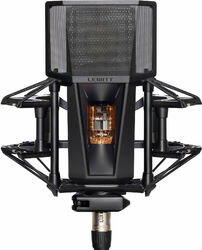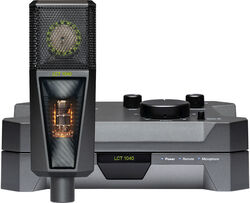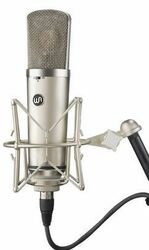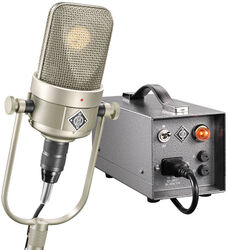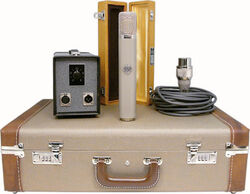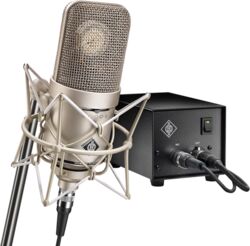Why Choose a Tube Microphone?
Imagine the tube microphone as a sound expert in a studio. Think of the tube microphone as a sound professional who enhances every note with unique characteristics. How does it work?
Well, it's thanks to things called "vacuum tubes," which are like magical tools in the microphone. Vacuum tubes act as filters, giving the music a distinctive tone.
When sound enters the microphone, these vacuum tubes make it louder and give it a special touch. It's a bit like the tube microphone putting a musical "signature" on the sound. That's why recordings made with a tube microphone sound different - they have a kind of "musical personality."
The operation of the tube microphone is a blend of old and new technologies. Despite their "vintage" aspect, vacuum tubes add a pleasant warmth to the sound, providing a special texture. Different parts of the microphone, such as electronic tubes and capsules, work together to make the sound more interesting. In summary, the tube microphone is not just an ordinary studio microphone. It plays a bit of a musician's role. It takes the sound, amplifies it, and adds its own special touch. That's what makes the tube microphone unique, and why so many singers and musicians love it for recording their voices, instruments, or other sounds.
What Are the Best Brands of Tube Microphones?
In this enchanting world of tube microphones, some brands stand out as undisputed virtuosos. Neumann M149, Lewitt lct1040, Telefunken TF-51, and others are the experts in this sonic harmony. These tube microphones are not just tools; they are precision instruments, sculpting sound with remarkable skill. Choosing from these brands ensures that every recording becomes a musical work of art.
What Do You Need to Connect a Tube Microphone?
Connecting a tube microphone is not a complicated task, but it requires a few essential elements to ensure optimal operation. Here's what you'll need:
- A high-quality cable: Use a quality cable to connect your microphone to the recording equipment. Opt for well-shielded cables to minimize interference and ensure lossless signal transmission.
- An audio interface or preamp: Connect your tube microphone to an audio interface. This can be a dedicated preamp or an external audio interface equipped with phantom power, necessary to power the microphone. Make sure the interface is compatible with your microphone and recording system.
- A power source: Most tube microphones require an external power source, usually provided by the audio interface via phantom power. Ensure that the power supply is sufficient and stable to guarantee optimal microphone operation.
- A quality environment: Choose a recording-friendly environment with acoustics suitable for your project. Minimal acoustic treatment, such as the use of sound-absorbing panels, can contribute to improving recording quality.
Drawbacks of a Tube Microphone
However, even in this perfect symphony, there are nuances to consider. Tube microphones require delicate handling. They can be sensitive to shocks, requiring special attention. The initial cost may seem high to some, but for those seeking unparalleled sound quality, it's an ideal investment to ensure high-quality recordings.
Extending these thoughts, one discovers that the tube microphone is not just a tool but a gateway to a >deeper musical experience, an exploration of music beyond simple listening. Every word and every note work together to create an immersive story that resonates with music enthusiasts.

